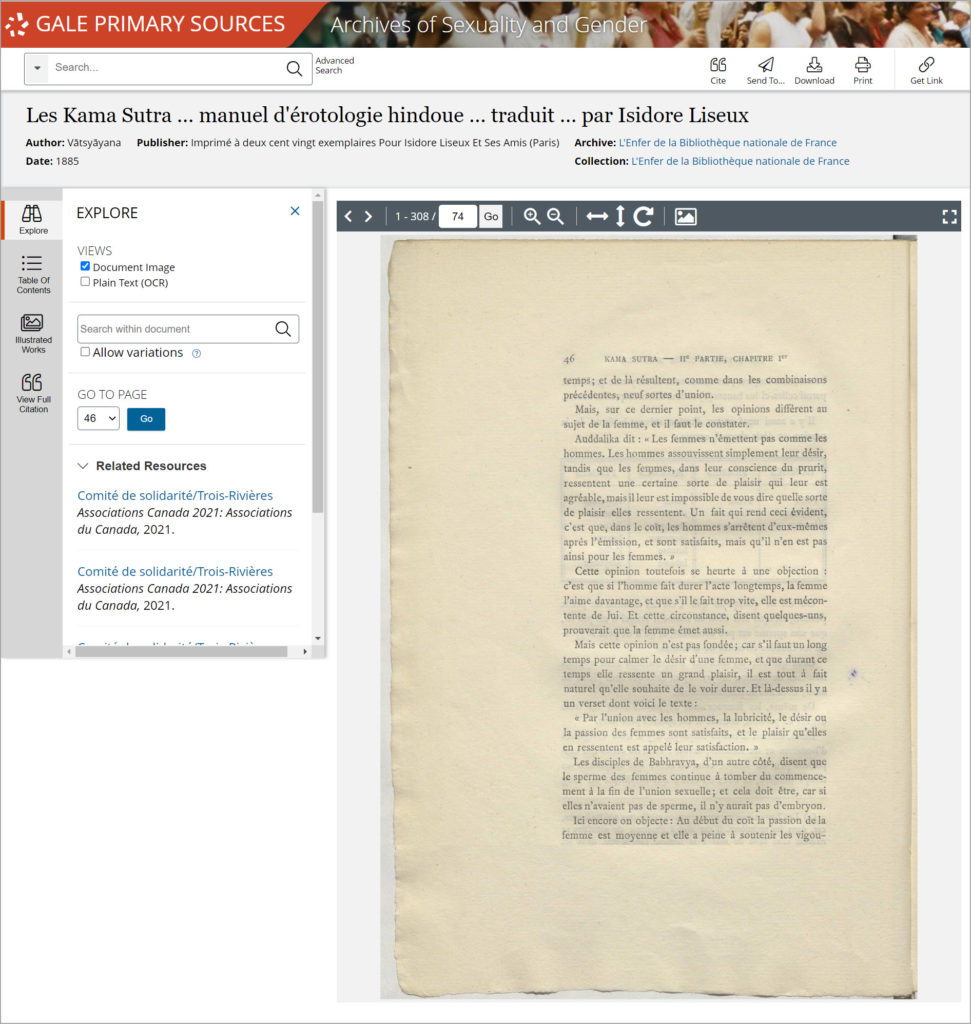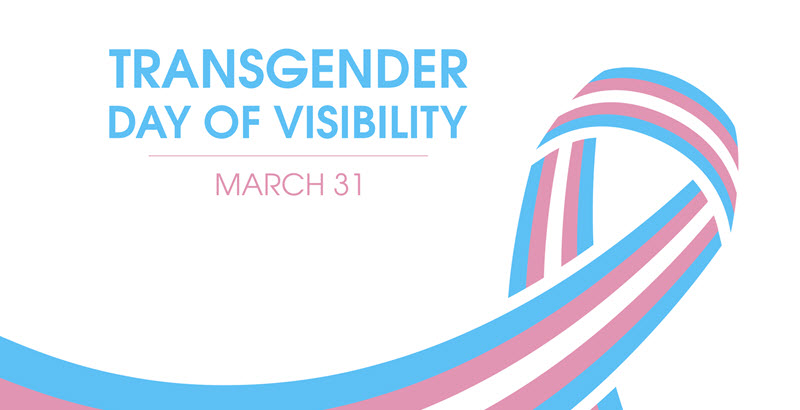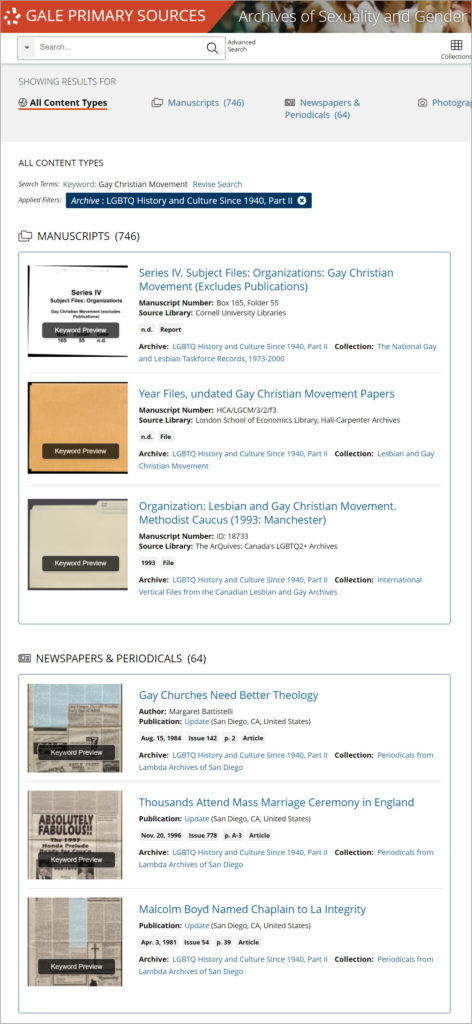| By Gale Staff |
March 31 is International Transgender Day of Visibility, a period during which we can all help celebrate and build awareness for the transgender community. Transgender Day of Visibility was founded in 2009 by psychotherapist and activist, Rachel Crandall-Crocker. The holiday was created to inspire a moment of happiness for and celebration of the transgender community; at the time, the only other transgender-specific holiday was one of remembrance.
While there are many creative ways to observe the holiday, we can all support the transgender community by ensuring that we’re using accurate, up-to-date information in the resources we share with students and colleagues. To do so, consider accessing Gale’s Archives of Sexuality and Gender, an extensive, multi-dimensional collection organized for gender studies research and sexuality education. Users will find thousands of diverse viewpoints and stories, helping scholars make critical connections with LGBTQIA+ history and modern-day activism. Gale relies on a prestigious advisory board of scholars and librarians to expertly craft this specialty collection of digital content.
Learn About LGBTQIA+ History and Culture
The Archives of Sexuality and Gender houses a substantive catalog of historical documents. LGBTQ History and Culture Since 1940, Part I focuses on primary and historical sources, giving researchers a deeply personal perspective on the LGBTQIA+ experience. Explore thousands of documents related to the AIDS crisis, including press clippings about gay and lesbian issues, internal U.S. government memoranda, policy statements, medical research records, private correspondence, images, and more. All of these resources are text-searchable, allowing users to customize their results.
LGBTQ History and Culture Since 1940, Part II is dedicated to the diversity within the LGBTQIA+ community itself, showcasing how this population has progressed and the ongoing battle for equal rights. Find documents from the Gay Christian Movement that demonstrate the evolving relationship between religion and the LGBTQIA+ community or study the gay liberation movement in Mexico and how LGBTQIA+ movements spread across the globe. This comprehensive two-part anthology will enhance any classroom study.
Study Sex and Sexuality from the Sixteenth to Twentieth Century
Archives of Sexuality & Gender: Sex and Sexuality, Sixteenth to Twentieth Centuries houses thousands of rare books about sexuality and gender, culminating in a truly one-of-a-kind collection. Browse an obscure selection of books from the British Library that was once considered too obscene for the public. Consider how our definition of offensive or immoral materials has changed throughout the decades, or browse studies on human sexuality from Alfred C. Kinsey’s original library. Resources that once were out of reach are now readily available through your institution’s libraries.
Explore International Perspectives on LGBTQIA+ Activism and Culture
Transgender Day of Visibility is a global awareness campaign, and your institution’s students can take the opportunity to consider the state of LGBTQIA+ rights and cultural freedoms outside of the United States. Archives of Sexuality and Gender: International Perspectives on LGBTQ Activism and Culture, is a unique reflection on LGBTQIA+ history across the world, including perspectives from lesser-known communities in southern Africa and even Australia. For example, Gale users can discover 25 collections from Gay and Lesbian Memory in Action (GALA) in South Africa, an organization dedicated to preserving LGBTQIA+ stories within South African history. By integrating these multinational narratives, you help young learners develop a more inclusive, global perspective of important cultural issues.
Discover L’Enfer de la Bibliothèque Nationale de France
L’enfer, meaning Hell in French, should give you some clue as to the nature of this collection. Considered immoral for its time, L’Enfer de la Bibliothèque Nationale de France features images, manuscripts, letters, and essays dating back to the early 1500s. Read actual pages from 18th-century surrealist texts or a French translation of the Kama Sutra published in 1885.

No matter your research interests, you’ll be impressed by the depth and variety of your search results. Luckily, you can leverage Gale’s advanced search tools to explore more than 2,000 rare monographs. These features allow users to view images of centuries-old documents or simply convert the information into plain text (which can make translation much easier should your French be lacking).
Access the Global Encyclopedia of LGBTQ History
For a substantive yet broader collection, Gale subscribers have access to The Global Encyclopedia of Lesbian, Gay, Bisexual, Transgender, and Queer (LGBTQ) History, which informs on both historical and more current events. There are endless topics to explore—users can discover an accessible overview of the state of transgender individuals within the Muslim community. No matter your area of interest, this encyclopedia serves as an essential foundation for those interested in researching the LGBTQIA+ community.
Don’t leave your students vulnerable to misinformation from a traditional search engine. Utilize Gale’s Archives of Sexuality and Gender peer-reviewed scholarly resources and feel confident in the accuracy and sensitivity of their search results.
If your academic institution is not a current subscriber to Gale’s Archives of Sexuality and Gender, learn more or request a trial.


